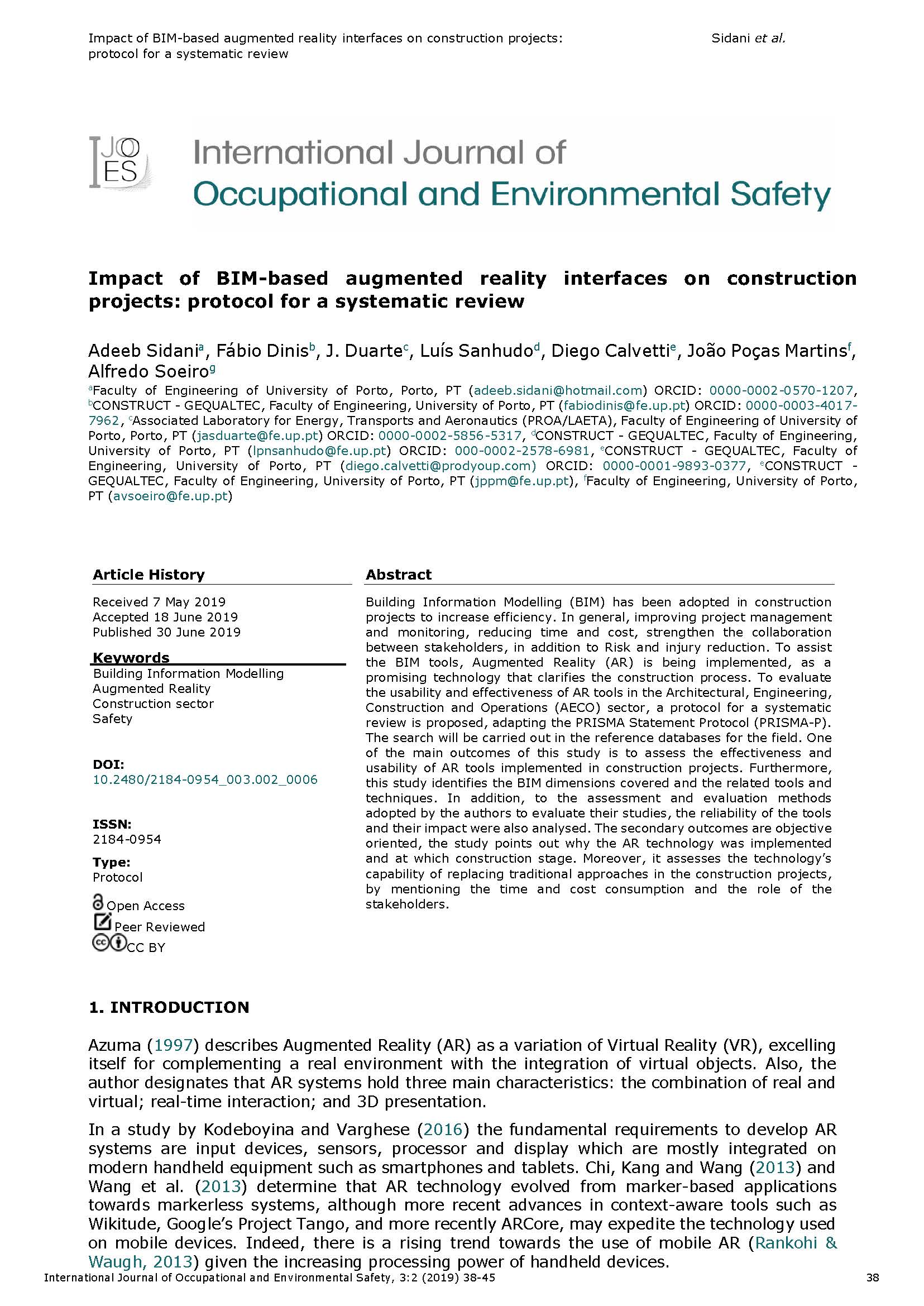Impact of BIM-based augmented reality interfaces on construction projects: protocol for a systematic review
Main Article Content
Abstract
Building Information Modelling (BIM) has been adopted in construction projects to increase efficiency. In general, improving project management and monitoring, reducing time and cost, strengthen the collaboration between stakeholders, in addition to Risk and injury reduction. To assist the BIM tools, Augmented Reality (AR) is being implemented, as a promising technology that clarifies the construction process. To evaluate the usability and effectiveness of AR tools in the Architectural, Engineering, Construction and Operations (AECO) sector, a protocol for a systematic review is proposed, adapting the PRISMA Statement Protocol (PRISMA-P). The search will be carried out in the reference databases for the field. One of the main outcomes of this study is to assess the effectiveness and usability of AR tools implemented in construction projects. Furthermore, this study identifies the BIM dimensions covered and the related tools and techniques. In addition, to the assessment and evaluation methods adopted by the authors to evaluate their studies, the reliability of the tools and their impact were also analysed. The secondary outcomes are objective oriented, the study points out why the AR technology was implemented and at which construction stage. Moreover, it assesses the technology’s capability of replacing traditional approaches in the construction projects, by mentioning the time and cost consumption and the role of the stakeholders.

